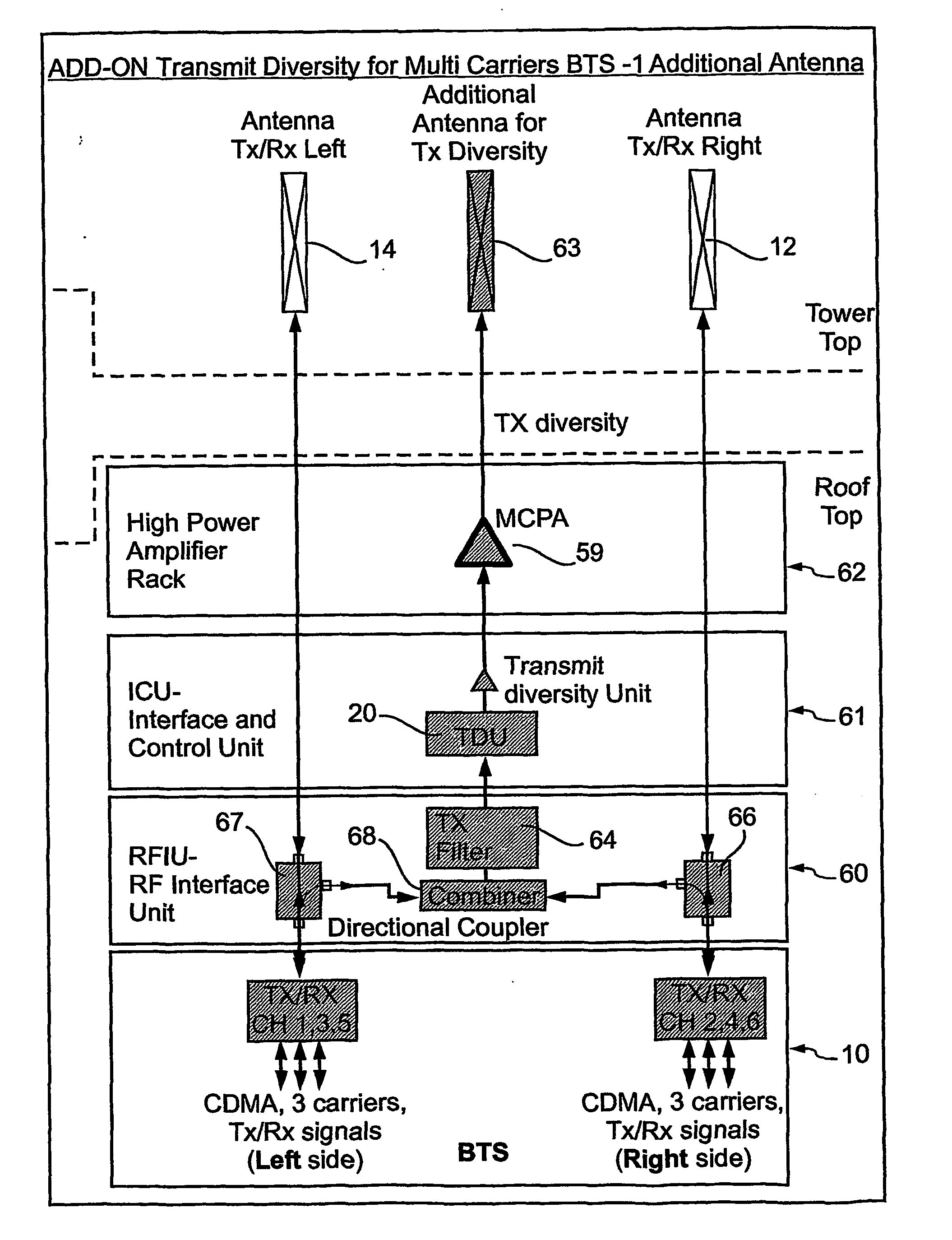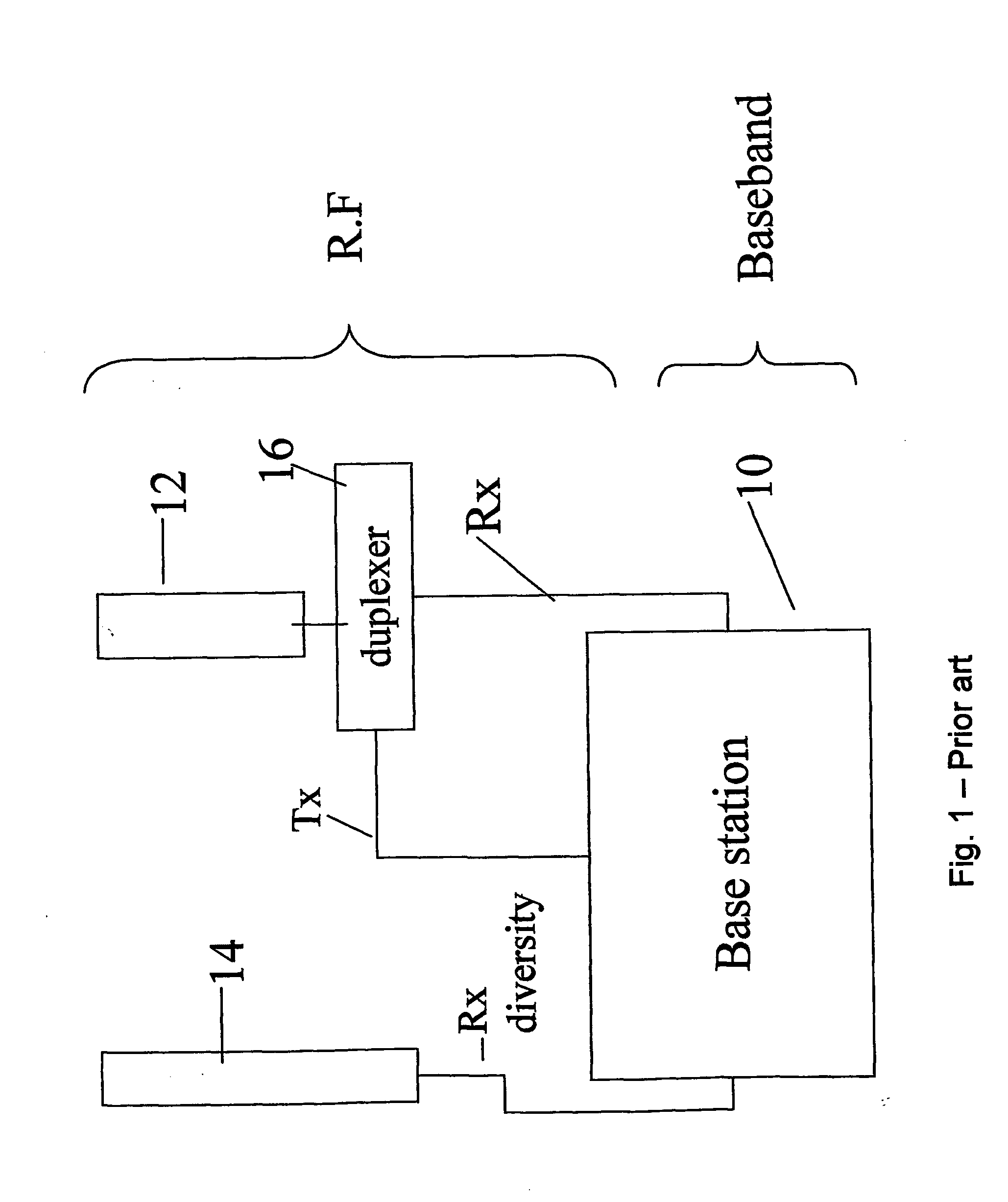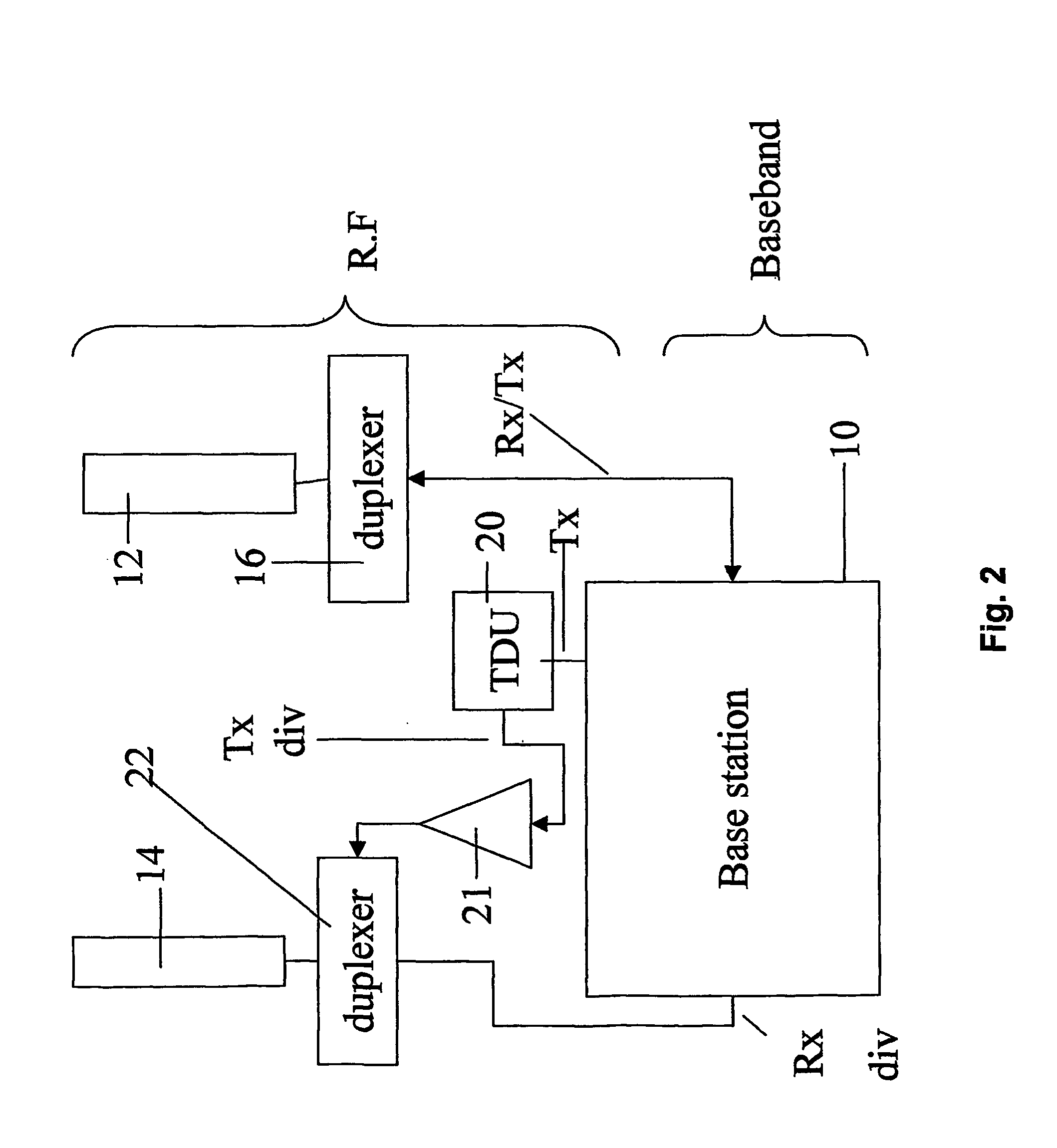Transmit diversity fo base stations
a technology of base stations and diversity, applied in diversity/multi-antenna systems, modulation, electromagnetic wave modulation, etc., can solve problems such as inability to achieve net performance benefits, complex operation of conversion of existing base stations to support transmit diversity, and planning difficulties
- Summary
- Abstract
- Description
- Claims
- Application Information
AI Technical Summary
Benefits of technology
Problems solved by technology
Method used
Image
Examples
Embodiment Construction
[0083] The present embodiments show a method, apparatus and system for converting a base station with a passive antenna array to support transmit diversity by applying a diversity operator to the already modulated R.F. signal. Thus the entire conversion can be carried out simply by adding components outside the base station structure at points which are easy to access. In the following a general description of the concept is followed by a series of conversion configurations for different kinds of base station. It is to be appreciated that the configurations described are not intended to be exhaustive and that the principle can be applied to other kinds of base station in ways that will be clear to the skilled person and furthermore the same principle can be applied in different ways to the kinds of base station described herein.
[0084] The principles and operation of a base station conversion kit and conversion method, and the operation of the converted base station according to the...
PUM
 Login to View More
Login to View More Abstract
Description
Claims
Application Information
 Login to View More
Login to View More - R&D
- Intellectual Property
- Life Sciences
- Materials
- Tech Scout
- Unparalleled Data Quality
- Higher Quality Content
- 60% Fewer Hallucinations
Browse by: Latest US Patents, China's latest patents, Technical Efficacy Thesaurus, Application Domain, Technology Topic, Popular Technical Reports.
© 2025 PatSnap. All rights reserved.Legal|Privacy policy|Modern Slavery Act Transparency Statement|Sitemap|About US| Contact US: help@patsnap.com



